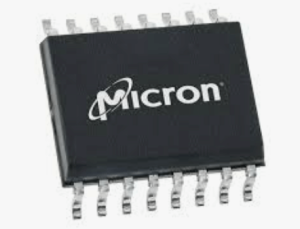
NOR Flash Integrated Circuits ( ICs) are a type of non-volatile memory that retains data without power. Renowned for random access capabilities, NOR Flash is ideal for applications requiring direct code execution, such as firmware storage in embedded systems. This guide explores NOR Flash’s history, architecture, applications, and future trends.
History
NOR Flash was invented by Fujio Masuoka at Toshiba in the 1980s, with Intel commercializing the first chip in 1988. Its development addressed the need for reliable, rewriteable memory for early computing devices, setting the stage for modern embedded systems.
Architecture and Operation
- Memory Cell Structure: Utilizes floating-gate transistors arranged in a parallel configuration, enabling individual cell access via row and column decoders.
- Read/Write/Erase Mechanisms:
- Read: Similar to RAM, using voltage application to sense cell current.
- Program: Hot-electron injection (fast but wears cells).
- Erase: Fowler-Nordheim tunneling (slower, block-level).
- Density and Scaling: Lower density than NAND due to larger cell size (1Mb–1Gb range). Struggles with scaling below 45nm, unlike 3D NAND.
Key Features
- Random Access: Enables execute-in-place (XiP) for microcontrollers.
- Endurance: ~10⁵–10⁶ cycles, suitable for infrequent writes.
- Data Retention: Up to 20 years, critical for automotive and industrial uses.
- Interfaces: Parallel (high-speed, multi-pin) vs. Serial (SPI, low-pin, cost-effective).
Applications
- Embedded Systems: Firmware storage in microcontrollers (e.g., STM32 series).
- Automotive: ECUs, infotainment (temperature-resistant variants, -40°C to 125°C).
- Consumer Electronics: Smartphones (boot code), IoT devices.
- Networking: Routers storing OS images.
Types of NOR Flash
- Parallel NOR: High-speed, 8-/16-bit bus, used in legacy systems.
- Serial NOR (SPI): Dominant today for compact designs (wearables, IoT).
- Low-Power NOR: Optimized for battery-powered devices.
Leading Manufacturers
- Micron, Infineon (Cypress), Winbond, Macronix, and Microchip offer diverse products. Example: Winbond’s W25Q series (SPI NOR for IoT).
Advantages vs. Disadvantages
| Advantages | Disadvantages |
|---|---|
| Fast random access | Higher cost per bit |
| High reliability | Lower density vs. NAND |
| XiP capability | Slower write/erase speeds |
Challenges
- Scaling Limits: Difficulty shrinking below 45nm without 3D stacking.
- Competition: MRAM/RRAM offer better endurance but lack NOR’s maturity.
- Cost: Higher per bit than NAND, limiting use in high-density storage.
Future Trends
- Automotive Growth: Increasing ADAS adoption drives demand.
- IoT Expansion: Need for low-power, compact memory.
- Technological Innovations: Potential 3D NOR architectures and hybrid memory solutions.
Comparison with NAND Flash
| Feature | NOR Flash | NAND Flash |
|---|---|---|
| Access Method | Random | Sequential |
| Density | Lower (up to 1Gb) | Higher (up to TBs) |
| Cost | Higher per bit | Lower per bit |
| Use Case | Code execution | Data storage |
Conclusion
NOR Flash remains vital for applications requiring reliability and direct code execution. Despite challenges from emerging technologies, its role in automotive, IoT, and industrial systems ensures ongoing relevance. Innovations in power efficiency and integration will shape its future, maintaining NOR Flash as a cornerstone of embedded memory solutions.
- Everything You Need To Know About Limit Switch - May 21, 2025
- Everthing You Should Know About Rheostat - May 20, 2025
- Everything You Need To Know About Reversing Contactor - May 19, 2025






